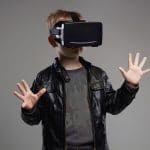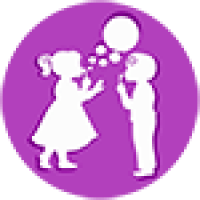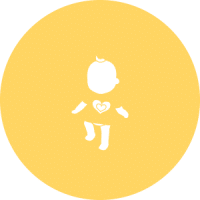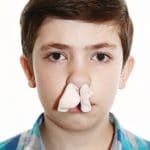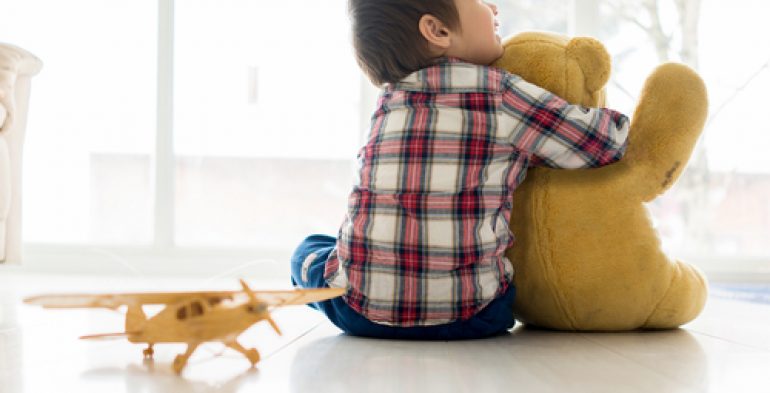
 A neurodevelopmental disorder medically called “Autism Spectrum Disorders (ASD)”, autism is often diagnosed during infancy, before the child turns 3 years old. It’s a neurodevelopmental disorder characterized by impaired social interaction, verbal and non-verbal communication, and restricted and repetitive behavior. The diagnostic criteria require that symptoms become apparent in early childhood, typically before the baby turns three. Autism affects information processing in the brain by altering how nerve cells and their synapses connect and organize; how this occurs is not well understood.
A neurodevelopmental disorder medically called “Autism Spectrum Disorders (ASD)”, autism is often diagnosed during infancy, before the child turns 3 years old. It’s a neurodevelopmental disorder characterized by impaired social interaction, verbal and non-verbal communication, and restricted and repetitive behavior. The diagnostic criteria require that symptoms become apparent in early childhood, typically before the baby turns three. Autism affects information processing in the brain by altering how nerve cells and their synapses connect and organize; how this occurs is not well understood.
Autism is one of three recognized disorders in the autism spectrum, the other two being Asperger syndrome, which lacks delays in cognitive development and language. Autism spectrum is a case that affects social communication, social interaction, interests, and behavior. The symptoms of the autism spectrum start before age three, though the diagnosis could happen later on sometimes. There is no treatment for this disorder, but this population of children and their families can improve through speech therapy, occupational therapy, or learning support, in addition to a number of other interventions.
What are the symptoms of autism? And what is it like to be autistic?
• The effect of autism is clear on speech. An autistic child cannot pronounce words clearly and feels heaviness in his tongue when pronouncing words.
• It can be observed clearly in the child’s behavior and reactions to the world around him, as he can’t behave seriously.
• His reactions are slow and unresponsive, he doesn’t respond quickly to being called or to hearing the door bell ringing, and doesn’t understand that the phone is ringing.
• Additionally, autistic children have different reactions toward some things, for example, they could start screaming if they hear a loud voice or have seizures.
• Autistic children don’t turn or respond when they hear their name
• Autistic children don’t make enough eye contact or look in the eyes of those they are talking to, and don’t interact with people talking to them.
• Autistic children refuse to hug
• Autistic children seem not to perceive the feelings of other people; they don’t smile or respond to social signals in their surrounding environment
• They start talking (pronouncing words) late compared to other children, often after age 2.
• They lose the ability to say specific words or phrases they used to know
• They speak in a weird voice, tones or rhythms, using a singing, monotonous, or robotic tone instead.
• They might repeat words, phrases, or expressions and not know how to use them.
• They perform repetitive action, such as spinning or waving their arms.
• They develop habits and rituals that they repeat all the time.
• They seem to be not hearing us or unable to hear us.
• They lose their temper at every change.
• They’re always moving.
• They are excessively sensitive to light, sound, or touch, but unable to feel pain.
Autism treatment
There is no specific treatment for autism this far. All we can do is to enable the child to live normally with us and within a community, in a specialized team that include a pediatrician that has full knowledge of the child’s growth, a child psychiatrist, a speech and language therapist, a hearing and speech therapist, a physiotherapist, and a functional therapist. There’s a number of effective educational programs among the treatment programs of autistic children, including, TEACCH (Treatment and Education of Autistic and Communication relate Handicapped Children). Such programs help this precious population to better cope with the society.
TEACCH is the first specialized educational program for educating autistic people and those who suffer from communication problems, and the first program certified by the Autism Society of America, developed by doctor Eric Schopler in 1972 at the University of North Carolina. This program relies on educating autistic individuals through their capabilities in visual perception, by arranging the surrounding environment and using visual aids such as photos and written words. It does not just train autistic children, but also their families and care providers. TEACCH is designed for people between 8 and 5 years old. IQ levels are not taken into account when autistic people are accepted, instead people with pervasive developmental disorders are accepted regardless of their IQ levels. This program is characterized for considering every autistic child individually and develops special educational programs separately for every child based on his/her social, mental, physical, and linguistic abilities. TEACCH enters the world of autistic children and harnesses their strengths, such as their attention to details and love of routine.
This program also provides diagnostic and evaluation services for autistic cases. Meanwhile, the center responsible for this program at the University of North Carolina provides technical counselling services for families, schools, and institutions working in the field of autism and similar disabilities.
The program pays great attention to the structural building of the educational process, leading to the development of everyday and social skills, through using visual stimuli that autistic individual are very responsive to. The building blocks of this program are:
• Organizing educational activities
• Organizing work
• Creating a certain routine
• Space organization
• Organizing work
• Visual learning




